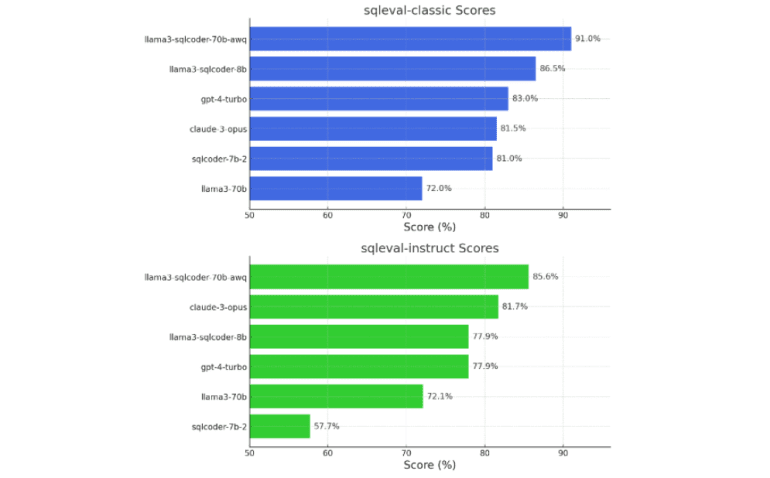- Defog AI introduces SQLCoder-8B, an advanced model for translating natural language into SQL queries.
- The model addresses limitations of previous systems, excelling in complex query scenarios and diverse database frameworks.
- SQLCoder-8B’s refined methodology significantly enhances its ability to process intricate instructions, leading to highly accurate SQL outputs.
- Rigorous training on diverse datasets empowers the model to handle real-world applications with precision.
- Benchmark tests showcase SQLCoder-8B’s remarkable accuracy, surpassing its predecessors in zero-shot scenarios.
- The model’s adaptability to queries with multiple correct answers reflects its practical utility in diverse database environments.
Main AI News:
In the realm of computational linguistics, bridging the gap between human language and machine comprehension of databases remains a pivotal focus. The crux lies in empowering machines to decipher natural language and transform it into SQL queries executable within database systems. This translation process is pivotal, democratizing database interaction for users lacking deep technical acumen in programming or SQL syntax.
At the heart of this endeavor lies the imperative for a tool capable of seamlessly translating human language into SQL, thus democratizing access to database-driven insights. Central to this challenge is the development of a system that not only accurately converts text but also flexibly adapts to diverse linguistic inputs and complex database structures. While existing methodologies lay foundational groundwork, they often falter in real-world scenarios where user instructions deviate significantly from the model’s training data or when databases present intricate schemas.
Enter SQLCoder-8B, the latest innovation from Defog, built on the LLama-3 framework. This state-of-the-art model redefines the landscape of SQL generation from natural language, addressing the shortcomings of its predecessors. Where traditional models struggled with complex queries laden with instructions or failed to navigate the nuances of varied database frameworks, SQLCoder-8B thrives. Its breakthrough lies in the integration of a comprehensive array of training data encompassing diverse instructions and challenging SQL generation tasks.
Distinguishing itself through a refined methodology, SQLCoder-8B significantly augments its capacity to parse and execute intricate instructions, culminating in highly precise SQL outputs. Rigorously trained on an enriched dataset teeming with diverse SQL query scenarios, this model is primed for real-world applications, ranging from straightforward queries to convoluted, multi-step SQL instructions.
The theoretical efficacy of SQLCoder-8B finds validation in its performance metrics. In benchmark assessments, it outshines its predecessors, particularly in zero-shot scenarios where it generates SQL code without prior specific examples. Sporting an accuracy rate surpassing 90% in such tests marks a substantial leap from the 70-75% accuracy rates observed in earlier models. This advancement underscores the model’s heightened adeptness in interpreting and executing SQL tasks directly from natural language inputs.
Bolstering its prowess is a robust evaluation framework, ensuring SQLCoder-8B adeptly handles queries with multiple correct answers, mirroring real-world scenarios where diverse formulations yield identical results. This adaptability is pivotal for practical applications, enabling the model to cater to varied user requirements and database architectures without sacrificing accuracy or relevance.
Conclusion:
Defog AI’s SQLCoder-8B marks a significant advancement in the field of natural language to SQL translation. Its superior performance in handling complex queries and diverse database structures indicates a promising future for enhanced database interaction capabilities, catering to a wide range of user needs and application scenarios. This innovation is poised to reshape the market landscape, driving efficiency and accessibility in database management and analytics.

